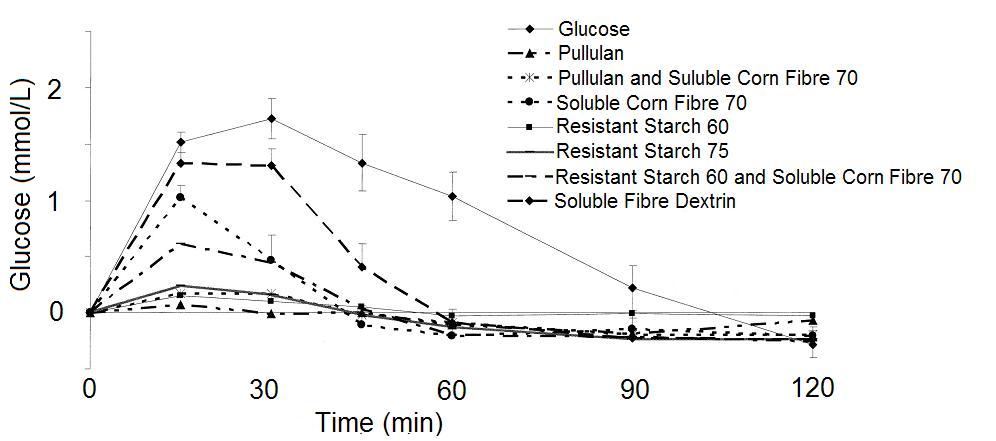Reducing postprandial glycaemia has been reported to be beneficial to health because it may decrease the risk of cardiovascular disease, metabolic syndrome, diabetes, obesity, and all-cause mortality. Removing the fibre from carbohydrate foods increases the glycaemic index of the food, which in tern raises the glycaemic load and the postprandial glucose and insulin responses. If refined carbohydrates are eaten habitually, decreases in insulin sensitivity may occur, which can then cause more serious metabolic disease. Many studies have reported a reduction in postprandial glycaemia through addition of fibre to the diet. Fibre can reduce postprandial glycaemia because it is able to slow digestion rates. Of particular benefit is soluble fibre, which may delay carbohydrate absorption by creating a physical barrier in the unstirred layer next to the enterocytes. Fibres from oats, beans, legumes, pulses, pectin and whole grains have all been found to be beneficial at improving postprandial glycaemia.
One group of researchers1 assessed the effects of a novel corn based dietary fibre on postprandial glycaemia. The study involved 12 healthy subjects who were fed a number of meals that comprised of 180mL water with either glucose (control), or a lemonade base containing a number of artificial corn based fibres that included Pullulan, Pullulan and Soluble Corn Fibre 70, Soluble Corn Fibre 70, Resistant Starch-60, Resistant Starch-75, Soluble Corn Fibre 70 and Resistant Starch-60 or Soluble Fibre Dextrin. Consumption of the fibre meals resulted in significant reductions in glycaemic response as measured by the glucose area under the curve, at all time points, when compared to the control. Bench assays were used to assess the digestibility of the fibre test meals using enzymes. The results showed that digestibility was associated with the area under the curve for glucose, suggesting that the lower postprandial glycaemia was caused by slower digestion rates.
Along with a reduction in glucose, the subjects also experienced lower postprandial insulin with the test meals compared to the glucose control. This suggest that corn fibre can benefit insulin levels when compared to a low fibre control. These results are supported by a growing body of research that shows the benefits of high fibre diets at lowering postprandial glycaemia. Interestingly, the different fibres and combination of fibres had different effects on postprandial insulin and glucose response, which has been observed in other similar research. While the fibres in this study were artificially manufactured by the Tate and Lyle company, other authors have achieved similar results with natural fibres. The resistance of fibre (natural or manufactured) to digestion is due to the chemical structure within the carbohydrate bonds, and differences in this structure explains the differing effects on postprandial glycaemia.
Figure 1. Postprandial glucose concentrations with glucose or corn fibre.
RdB

